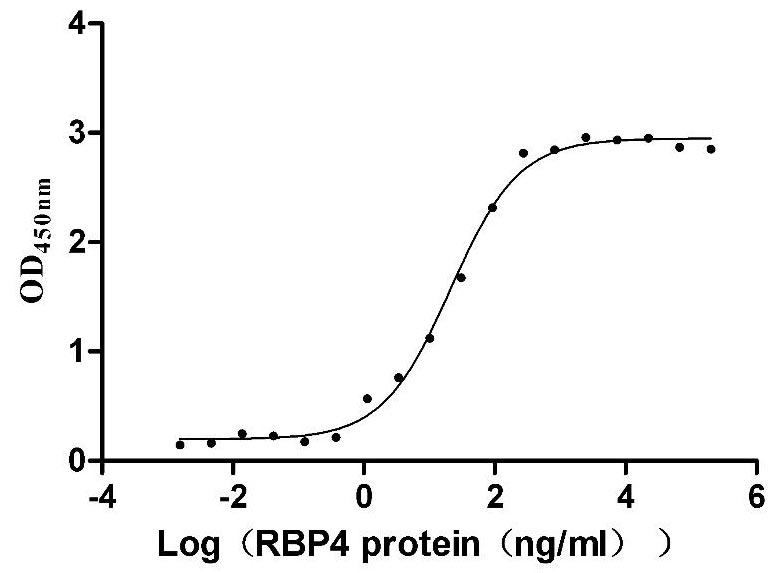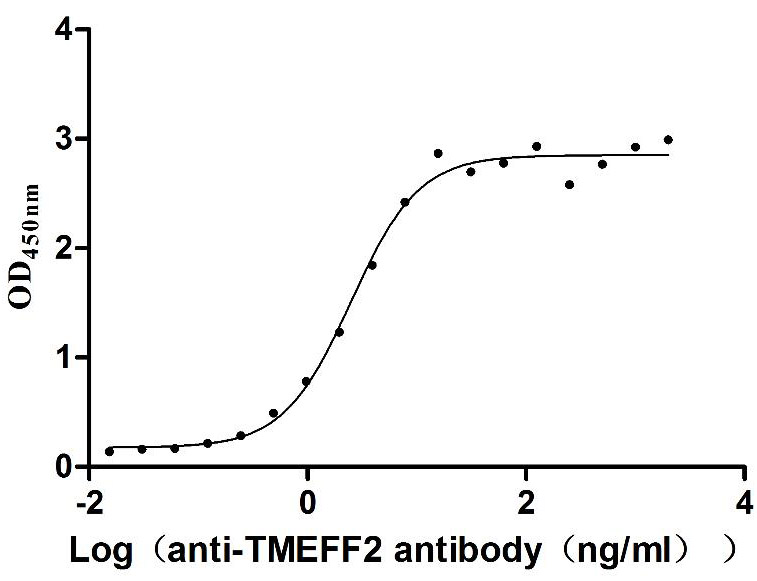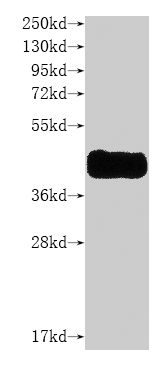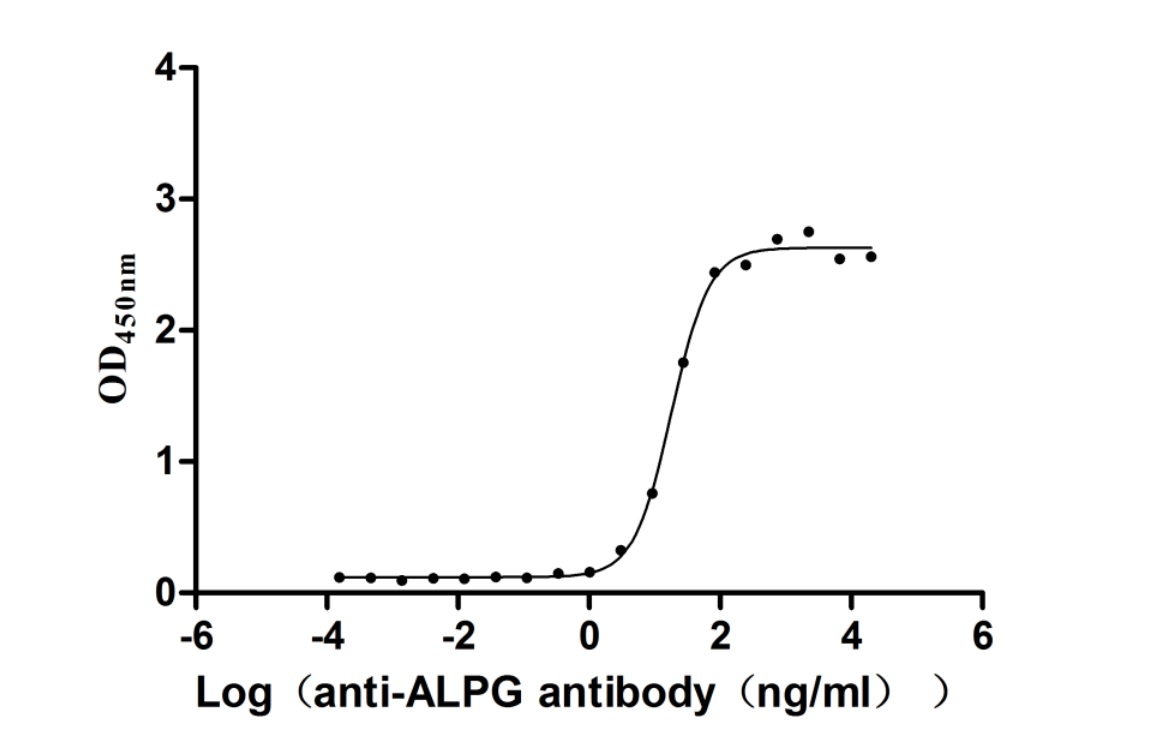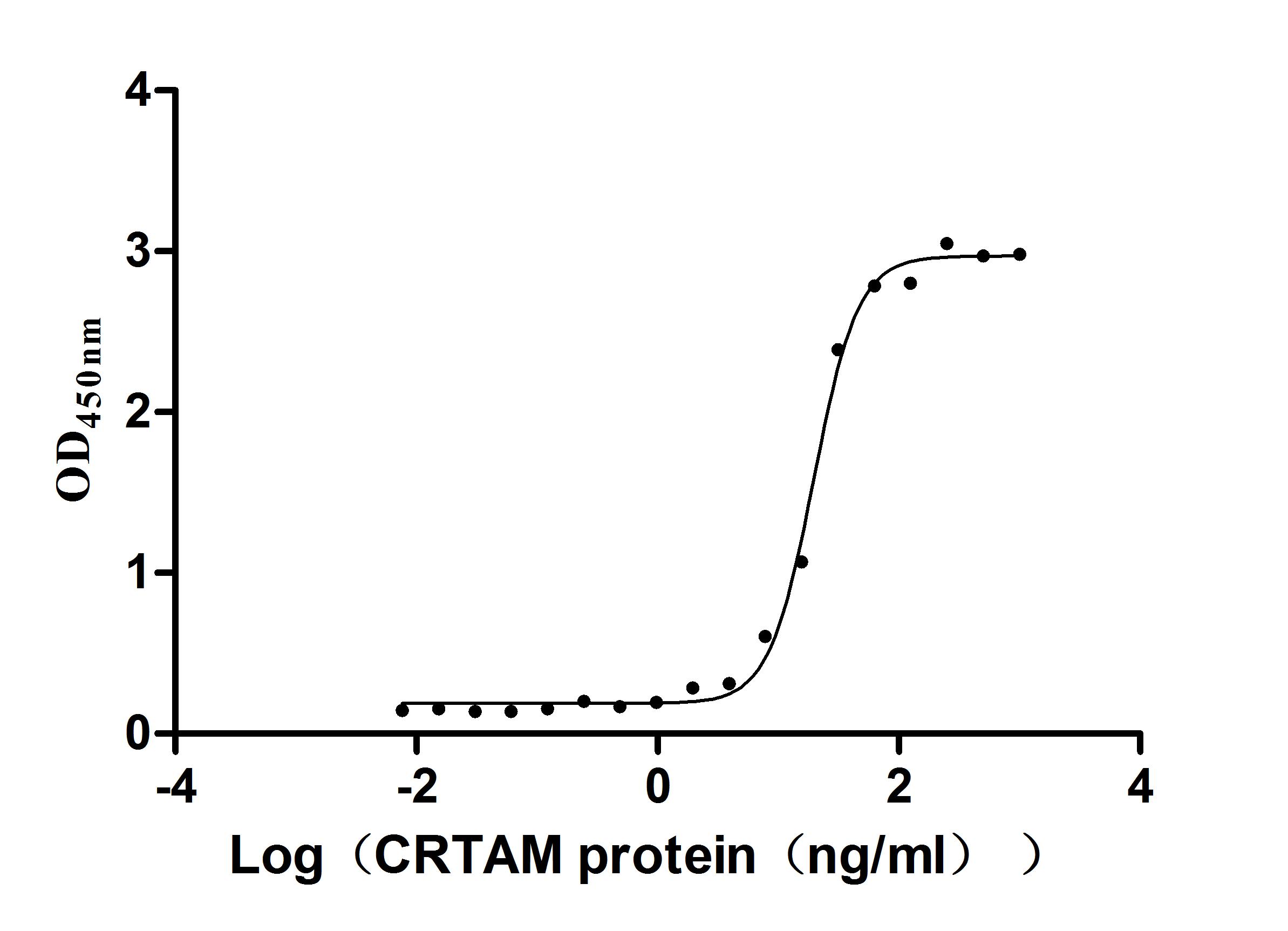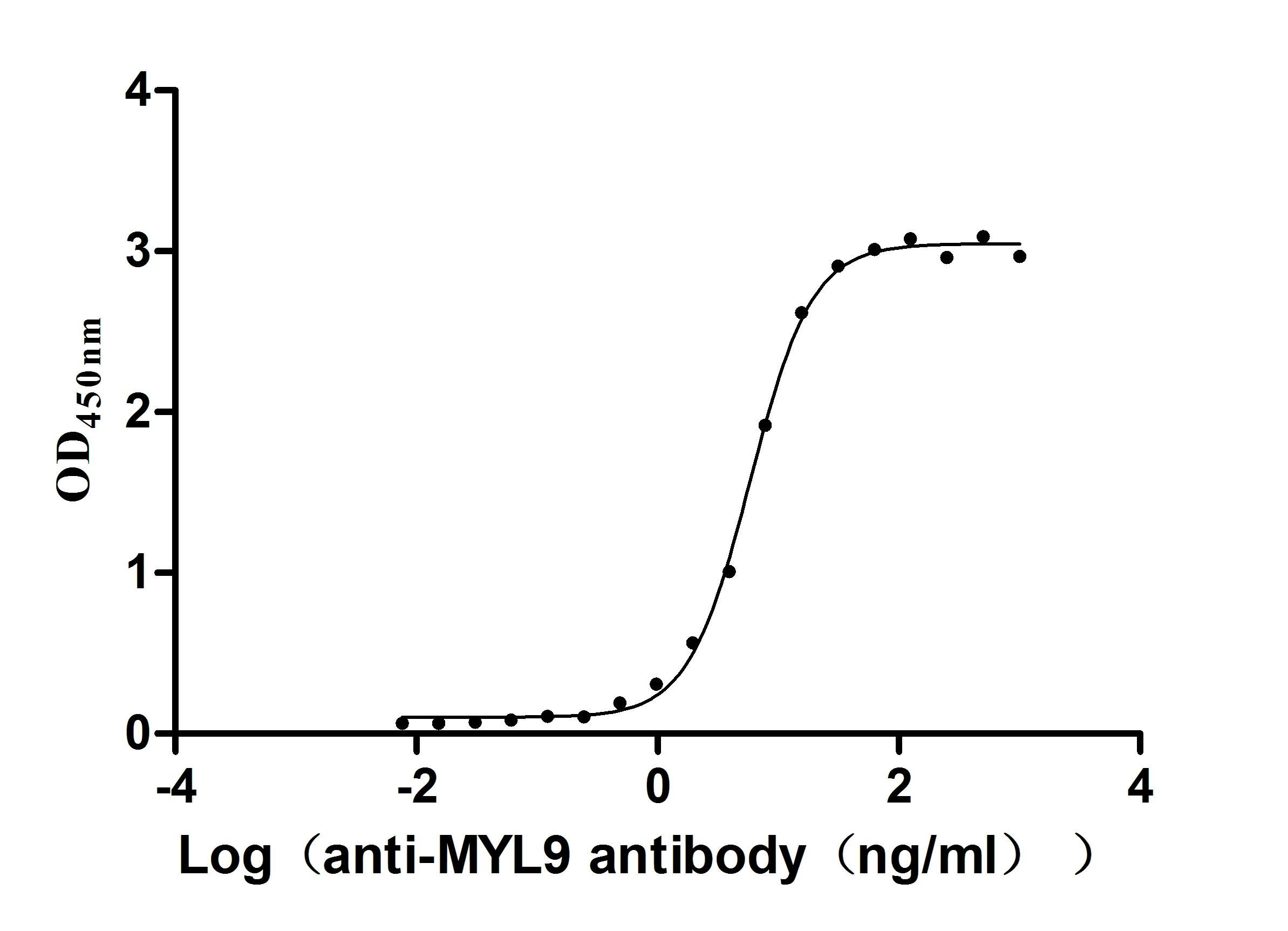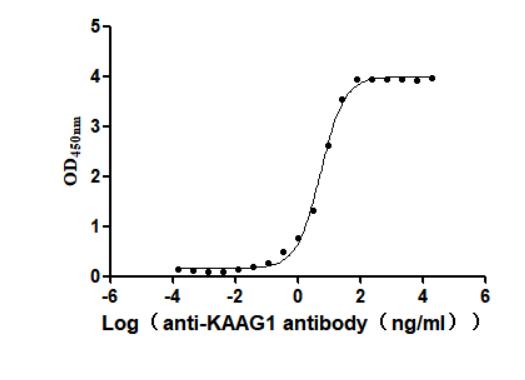Recombinant Mouse Dynamin-like 120 kDa protein, mitochondrial (Opa1), partial
-
中文名稱:小鼠Opa1重組蛋白
-
貨號:CSB-YP016340MO1
-
規(guī)格:
-
來源:Yeast
-
其他:
-
中文名稱:小鼠Opa1重組蛋白
-
貨號:CSB-EP016340MO1
-
規(guī)格:
-
來源:E.coli
-
其他:
-
中文名稱:小鼠Opa1重組蛋白
-
貨號:CSB-EP016340MO1-B
-
規(guī)格:
-
來源:E.coli
-
共軛:Avi-tag Biotinylated
E. coli biotin ligase (BirA) is highly specific in covalently attaching biotin to the 15 amino acid AviTag peptide. This recombinant protein was biotinylated in vivo by AviTag-BirA technology, which method is BriA catalyzes amide linkage between the biotin and the specific lysine of the AviTag.
-
其他:
-
中文名稱:小鼠Opa1重組蛋白
-
貨號:CSB-BP016340MO1
-
規(guī)格:
-
來源:Baculovirus
-
其他:
-
中文名稱:小鼠Opa1重組蛋白
-
貨號:CSB-MP016340MO1
-
規(guī)格:
-
來源:Mammalian cell
-
其他:
產(chǎn)品詳情
-
純度:>85% (SDS-PAGE)
-
基因名:
-
Uniprot No.:
-
別名:Opa1; Dynamin-like 120 kDa protein, mitochondrial; Large GTP-binding protein; LargeG; Optic atrophy protein 1 homolog
-
種屬:Mus musculus (Mouse)
-
蛋白長度:Partial
-
蛋白標(biāo)簽:Tag?type?will?be?determined?during?the?manufacturing?process.
The tag type will be determined during production process. If you have specified tag type, please tell us and we will develop the specified tag preferentially. -
產(chǎn)品提供形式:Lyophilized powder
Note: We will preferentially ship the format that we have in stock, however, if you have any special requirement for the format, please remark your requirement when placing the order, we will prepare according to your demand. -
復(fù)溶:We recommend that this vial be briefly centrifuged prior to opening to bring the contents to the bottom. Please reconstitute protein in deionized sterile water to a concentration of 0.1-1.0 mg/mL.We recommend to add 5-50% of glycerol (final concentration) and aliquot for long-term storage at -20℃/-80℃. Our default final concentration of glycerol is 50%. Customers could use it as reference.
-
儲存條件:Store at -20°C/-80°C upon receipt, aliquoting is necessary for mutiple use. Avoid repeated freeze-thaw cycles.
-
保質(zhì)期:The shelf life is related to many factors, storage state, buffer ingredients, storage temperature and the stability of the protein itself.
Generally, the shelf life of liquid form is 6 months at -20°C/-80°C. The shelf life of lyophilized form is 12 months at -20°C/-80°C. -
貨期:Delivery time may differ from different purchasing way or location, please kindly consult your local distributors for specific delivery time.Note: All of our proteins are default shipped with normal blue ice packs, if you request to ship with dry ice, please communicate with us in advance and extra fees will be charged.
-
注意事項(xiàng):Repeated freezing and thawing is not recommended. Store working aliquots at 4°C for up to one week.
-
Datasheet :Please contact us to get it.
相關(guān)產(chǎn)品
靶點(diǎn)詳情
-
功能:Dynamin-related GTPase that is essential for normal mitochondrial morphology by regulating the equilibrium between mitochondrial fusion and mitochondrial fission. Coexpression of isoform 1 with shorter alternative products is required for optimal activity in promoting mitochondrial fusion. Binds lipid membranes enriched in negatively charged phospholipids, such as cardiolipin, and promotes membrane tubulation. The intrinsic GTPase activity is low, and is strongly increased by interaction with lipid membranes. Plays a role in remodeling cristae and the release of cytochrome c during apoptosis. Proteolytic processing in response to intrinsic apoptotic signals may lead to disassembly of OPA1 oligomers and release of the caspase activator cytochrome C (CYCS) into the mitochondrial intermembrane space. Plays a role in mitochondrial genome maintenance.; Produced by cleavage at position S1 by OMA1 following stress conditions that induce loss of mitochondrial membrane potential, leading to negative regulation of mitochondrial fusion.; Isoforms that contain the alternative exon 4b (present in isoform 2, but not in isoform 1) are required for mitochondrial genome maintenance, possibly by anchoring the mitochondrial nucleoids to the inner mitochondrial membrane.
-
基因功能參考文獻(xiàn):
- Propose a novel function of OPA1 in mediating the CoQ10-responsive regulation of respiratory CIV activity in brain mitochondria from aging mice. PMID: 28890359
- multiple OPA1 isoforms are required for mitochondrial dynamics, while any single isoform can support all other functions. PMID: 28636943
- Mechanistically, the ablation of Opa1 leads to ER stress, which signals via the unfolded protein response (UPR) and FoxOs, inducing a catabolic program of muscle loss and systemic aging. PMID: 28552492
- Mitochondrial dysfunction in an Opa1 mouse model of dominant optic atrophy results from Opa1 haploinsufficiency. PMID: 27468686
- TNFR2 activation protects cardiac myocytes against stress by up-regulating OPA1 expression. PMID: 28637784
- OPA1 mutant mice are resistant to age- and diet-induced weight gain and insulin resistance, by mechanisms that involve activation of endoplasmic reticulum stress and secretion of fibroblast growth factor 21 (FGF21) from skeletal muscle, resulting in increased metabolic rates and improved whole-body insulin sensitivity. PMID: 28607005
- OPA1 modulates cristae morphology but is dispensable for cristae junction formation. Endogenous OPA1 and MIC60 show a physical interaction. PMID: 27587279
- Opa1 deficiency was associated with increased sensitivity to Ischemia-Reperfusion Injuries, imbalance in dynamic mitochondrial Ca2+ uptake, and subsequent increase in NCX activity. PMID: 27723783
- Whereas Parkin has been reported to positively regulate the expression of OPA1 through NEMO, herein we found that PARK2 overexpression did not modify the expression of OPA1. PMID: 26024391
- stress-induced OMA1 activation and guanosine triphosphatase OPA1 cleavage limit mitochondrial fusion and promote neuronal death PMID: 26783299
- Data suggest that in a mouse model of neonatal hypoxic-ischemic brain injury, the expression of mitochondrial shaping proteins, such as OPA1 and Yme1L, are altered; in vitro and in vivo, OPA1 is cleaved to shorter forms and Yme1L expression is reduced. PMID: 26393574
- results indicate that the OPA1-dependent cristae remodeling pathway is a fundamental, targetable determinant of tissue damage in vivo. PMID: 26039448
- cristae shape amelioration by controlled Opa1 overexpression improves two mouse models of mitochondrial disease. PMID: 26039449
- unprocessed OPA1 is sufficient to maintain heart function, OMA1 is a critical regulator of cardiomyocyte survival, and mitochondrial morphology and cardiac metabolism are intimately linked. PMID: 26785494
- Data suggest that mitochondrial fusion and fission events are regulated by four GTPases: OPA1, Drp1 (dynamin 1-like protein), and Mfn1/2 (mitofusin 1 and 2). [REVIEW] PMID: 26375863
- Photoresponsive RGCs are protected against cell death due to the Opa1 mutation, but not by melanopsin expression itself. PMID: 26218912
- Results suggest that Mfn2 and OPA1 are upregulated during bone marrow progenitor differentiation and promote the migration of immature dendritic cells by regulating the expression of CCR7. PMID: 25387754
- Reactive oxygen species might affect MyHC content by modulating OPA1 cleavage in muscle degeneration. PMID: 25393477
- mitochondria adapt to metabolic shifts through the parallel remodeling of the cristae and of the MERCs via a mechanism that degrades Opa1 in an Mfn2-dependent pathway. PMID: 25352671
- a novel way in which OPA1 senses energy substrate availability, which modulates its function in the regulation of mitochondrial architecture in a SLC25A protein-dependent manner. PMID: 25298396
- Proteolytic cleavage of Opa1 stimulates mitochondrial inner membrane fusion and couples fusion to oxidative phosphorylation. PMID: 24703695
- OPA1 appears necessary for the normal adaptive response and mitochondrial biogenesis of skeletal muscle to training. PMID: 24042504
- OMA1-mediated OPA1 proteolysis plays an important role in the disruption of mitochondrial dynamics in ischemic acute kidney injury. PMID: 24671334
- findings show that transient matrix contraction is a novel cellular mechanism regulating mitochondrial activity through the function of the inner membrane dynamin OPA1 PMID: 24627489
- Constitutive OPA1 cleavage by YME1L and OMA1 at two distinct sites leads to the accumulation of both long and short forms of OPA1 and maintains mitochondrial fusion. PMID: 24616225
- OPA1 mutation leads to deficiency in antioxidant transcripts, increased reactive oxygen species, mitochondrial dysfunction, and late-onset cardiomyopathy. PMID: 23316298
- the OPA1/PARL dependent pathway of cristae remodeling is implicated in heat shock. PMID: 22579715
- Opa1-dependent inner membrane remodeling controls efficiency of steroidogenesis. PMID: 22658590
- OPA1 plays an important role in mitochondrial morphology and mitochondrial permeability transition pore functioning. PMID: 22406748
- This study showed that mitochondrial fission protein dynamin-related protein 1 (Drp1) and fusion protein optic atrophy 1 (Opa1) were both upregulated in the ischemic penumbra. PMID: 22345048
- Opa1 is essential for retinal ganglion cell synaptic architecture and connectivity PMID: 22300878
- Optic atrophy 1 is an A-kinase anchoring protein on lipid droplets that mediates adrenergic control of lipolysis. PMID: 21983901
- Beta cells lacking Opa1 maintained normal copy numbers of mtDNA; however, the amount and activity of electron transport chain complex IV were significantly decreased PMID: 21551073
- study provides the first evidence that homocysteine-induced ganglion cell loss involves the dysregulation of mitochondrial dynamics, both in vivo and in vitro. PMID: 21642619
- Opa1 as a potential therapeutic target to promote neuronal survival following acute brain damage and neurodegenerative diseases. PMID: 21041314
- Mitochondrial retention of Opa1 protein is essential for normal embryogenesis. PMID: 20652258
- OPA1 can directly modulate retinal ganglion cell survival, and increasing OPA1 expression may protect against retinal ganglion cell death in glaucomatous optic neuropathy. PMID: 20664796
- These results highlight the importance of normal mitochondrial fusion balance, as influenced by the OPA1 protein in maintaining the dendritic morphology of retinal ganglion cells. PMID: 20817698
- OPA1 disease alleles associated with dominant optic atrophy display selective defects in several activities, including cardiolipin association, GTP hydrolysis and membrane tubulation. PMID: 20185555
- Our results indicate an important role of OPA1 in mitochondrial dependent Ca(2+) homeostasis and cell survival in retinal ganglion cells. PMID: 20450306
- A direct effect of loss of Omi/HtrA2 on mitochondrial morphology and a novel role of this mitochondrial serine protease in the modulation of OPA1. PMID: 20064504
- This is the first electrophysiological demonstration of a visual function deficit in aged Opa1 mice. VEP measurements and retrograde labeling experiments show that the number of RGCs is reduced whereas the remaining RGCs and axons function normally. PMID: 19834041
- Double Mfn-null cells show neither outer nor inner membrane fusion, while mitochondria in OPA1-null cells contain multiple matrix compartments bounded together by a single outer membrane, consistent with uncoupling of outer versus inner membrane fusion. PMID: 19477917
- The data suggest an important and specific function of the OPA1 protein, not only in the optic nerve forming ganglion cells but also in the intrinsic signal processing of the inner retina. PMID: 15505078
- OPA1 functionally requires mitofusin 1 to regulate mitochondrial fusion PMID: 15509649
- OPA1, Mfn1 and Mfn2 have roles in mitochondrial fusion, cell growth, mitochondrial membrane potential, and cellular respiration PMID: 15899901
- Thus, OPA1 has genetically and molecularly distinct functions in mitochondrial fusion and in cristae remodeling during apoptosis. PMID: 16839885
- mitochondrial fragmentation correlates with processing of large isoforms of OPA1 PMID: 17003040
- Manipulation of OPA1 isoform 1 levels in induces changes in the mitochondrial network in the cell; mutations of isoform 1 could lead to devastating effects on retinal ganglion cells. PMID: 18419770
- IOP elevation may directly damage mitochondria in the ONH axons by promoting reduction of COX, mitochondrial fission and cristae depletion, alterations of OPA1 and Dnm1 expression, and induction of OPA1 release. PMID: 18469184
顯示更多
收起更多
-
亞細(xì)胞定位:Mitochondrion inner membrane; Single-pass membrane protein. Mitochondrion. Mitochondrion membrane.
-
蛋白家族:TRAFAC class dynamin-like GTPase superfamily, Dynamin/Fzo/YdjA family
-
組織特異性:Detected in brain (at protein level). Detected in brain, brain stem, heart, kidney, liver and skeletal muscle.
-
數(shù)據(jù)庫鏈接:
Most popular with customers
-
Recombinant Human Claudin-18.2 (CLDN18.2)-VLPs (Active)
Express system: Mammalian cell
Species: Homo sapiens (Human)
-
Recombinant Mouse Transthyretin (Ttr) (Active)
Express system: Mammalian cell
Species: Mus musculus (Mouse)
-
Recombinant Human Tomoregulin-2 (TMEFF2), partial (Active)
Express system: Mammalian cell
Species: Homo sapiens (Human)
-
Recombinant Human C-C chemokine receptor type 8 (CCR8)-VLPs (Active)
Express system: Mammalian cell
Species: Homo sapiens (Human)
-
Recombinant Human Alkaline phosphatase, germ cell type (ALPG) (Active)
Express system: Mammalian cell
Species: Homo sapiens (Human)
-
Recombinant Human Cell adhesion molecule 1 (CADM1), partial (Active)
Express system: Mammalian cell
Species: Homo sapiens (Human)
-
Recombinant Human Myosin regulatory light chain 12A (MYL12A) (Active)
Express system: E.coli
Species: Homo sapiens (Human)
-
Recombinant Human Kidney-associated antigen 1(KAAG1) (Active)
Express system: Baculovirus
Species: Homo sapiens (Human)


-AC1.jpg)
